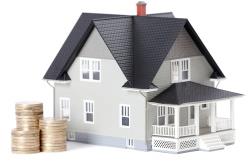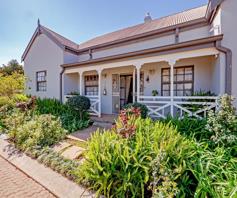Housing affordability, as measured by the ratios of house prices and mortgage repayments to household disposable income, levelled out towards the end of 2012 and early 2013, but remained largely favourable compared with a few years ago.

Absa notes that nominal year-on-year (y/y) house price growth in the middle-segment of the market (homes measuring 80 to 400 square metres) and priced up to R3.8 million in 2013) increased further in the second quarter of the year, but lower price growth was evident in some middle-segment categories.
This was the net result of trends in house price and disposable income growth, and the mortgage interest rate remaining unchanged since mid-2012, currently at a 40 year low of 8.5 percent per annum, according to the Absa Housing Review Q2 2013.
The report reveals that despite low mortgage interest rate, many households’ ability to take advantage of the favourable trends in housing affordability is still affected by factors such as employment, income, savings, living costs, debt levels, as well as credit-risk profiles (as reflected by the state of consumer credit records), the National Credit Act and banks’ lending criteria in the case of mortgage loan applications for buying homes.
Writing in the report, Jacques du Toit, Absa Home Loans property analyst, says a downward/upward trend in the abovementioned two housing affordability ratios implies that house prices and mortgage repayments are rising at a slower/faster pace than household disposable income.
The result is that housing is in effect becoming more/less affordable, he says.
According to ooba statistics, while many still battle to obtain home loan finance, they are seeing growth in first-time buyers with 53 percent of home loan applications being first-time buyers.
The value of new home loans approved through ooba in July was up 27 percent on July 2012 and from January to July 2013, ooba’s approvals were up 24 percent over the same period in 2012 and up 227 percent over the corresponding period in 2009.
Rhys Dyer, chief executive officer of ooba says there is renewed confidence in the market and home buyers have more access to credit for home loans, aided by record low-interest rates.
The average deposit recorded was up 16 percent y/y and 6.6 percent month-on-month to 14.6 percent of the purchase price while the average approved bond size was 4.1 percent higher y/y.
According ooba, the initial bank decline ratio dropped by 0.7 percent y/y – an average of 47.3 percent in July – while the ratio of applications declined by one lender, granted by another increased by 2.3 percent y/y to 29.9 percent.

The north coast of KwaZulu-Natal nominal house price growth was 42.7 percent y/y in Q2 2013, which is indicative of the development along this section of the province’s coast in recent times and the consequent increasing demand for primary residential property.
“Home buyers are assured a higher probability of an approved loan if they apply to more than one bank, a service that bond originators such as ooba provide for free,” says Dyer.
He says their approval rate was 66.8 percent in July and 1.5 percent higher y/y.
House price growth
Absa notes that nominal y/y house price growth in the middle-segment of the market (homes measuring 80 to 400 square metres and priced up to R3.8 million in 2013) increased further in the second quarter of the year, but lower price growth was evident in some middle-segment categories.
“Although remaining in positive territory, lower nominal y/y price growth occurred in the category for affordable housing in Q2 2013 from Q1 2013, whereas price growth in the luxury segment turned positive in Q2 2013 after price deflation in the first quarter.
The nominal price of a property refers to the price at which it was valued or transacted on the open market, i.e. the market price, selling or purchase price.
Du Toit explains that the real price of a property is the nominal price adjusted for the effect of inflation, and is calculated to determine if the value of a property has increased at a rate of above or below the inflation rate.
In addition to the nominal price, real price trends and growth are important from an investment point of view.
House price trends continued to be a reflection of property market conditions and related factors, which are affected by a combination of macroeconomic developments, the state of household finances and the level of consumer confidence.
Affordable housing
The second quarter of 2013 saw the average nominal price growth of affordable housing (homes measuring 40 to 79 square metres and priced up to R515 000 in 2013) continuing its gradual downward trend of the past three quarters to 3.6 percent y/y since peaking at around 7 percent in Q3 2012.
In real terms prices in the affordable segment dropped by 2 percent y/y and the average price of a home in the affordable segment of the market was R345 600 in Q2 2013.
Middle-segment housing
Y/y growth in the middle segment of the market (homes measuring 80 to 400 square metres and priced at R3.8 million or less in 2013) was 12 percent in Q2 2013 from 10.4 percent in the first quarter.

Housing affordability, as measured by the ratios of house prices and mortgage repayments to household disposable income levelled out towards the end of 2012 and early 2013, but remained largely favourable compared with a few years ago.
This brought the average price of a middle-segment home to about R1 162 500, and despite further improvement in y/y price growth up to the second quarter, growth has moderated in some categories in this segment as a result of base effects and monthly price growth slowing down since mid-2012.
The following price changes occurred in the three middle-segment categories in the first and second quarters of 2013:
Small houses (80 to 140 square metres and up to R3.8 million): Q1 (nominal 14.5 percent y/y and real 8.3 percent y/y) and Q2 (nominal (8.1 percent y/y and real 2.3 percent y/y).
Medium-sized houses (141 to 220 square metres up to R3.8 million): Q1 (nominal 9.6 percent y/y and real 3.7 percent) and Q2 (nominal 7.5 percent y/y and real 1.7 percent y/y).
Large houses (221 to 400 square metres up to R3.8 million): Q1: (nominal 7.7 percent y/y and real 1.8 percent y/y) and Q2 (nominal 11.8 percent y/y and real 5.7 percent y/y).
Luxury housing
In the segment of luxury housing (homes priced at between R3.8 million and R13.8 million in 2013), nominal price inflation of 6.5% y/y was recorded in Q2 2013 after price deflation occurred in the preceding two quarters.
The average price of a luxury home came to R5 172 800 in the second quarter noting that as the sample size of this category of housing is relatively small, a number of transactions of a higher value compared with previous quarters could have contributed to the strong price growth in the second quarter.
Regional house prices
House price growth at a regional level performed relatively strongly in a number of geographical areas in Q2 2013 on both a quarter-on-quarter and y/y basis.
Du Toit says house prices along the coast improved further in the second quarter of 2013, growing by a nominal 15.6 percent y/y, after being in a state of deflation from late 2011 up to mid-2012.
The relatively strong performance of the coastal market was largely driven by two regions:
• The north coast of KwaZulu-Natal nominal house price growth was 42.7 percent y/y in Q2 2013, which is indicative of the development along this section of the province’s coast in recent times and the consequent increasing demand for primary residential property.
• The Cape Peninsula and False Bay area in the Western Cape also recorded relatively strong nominal growth in house prices in Q2 2013, recording 16 percent y/y.

The Cape Peninsula and False Bay area in the Western Cape also recorded relatively strong nominal growth in house prices in Q2 2013, recording 16 percent y/y.
He points out these two coastal regions are to a large extent either part of or on the edge of greater metropolitan areas, which are driven by higher levels of economic activity and having larger populations than some other coastal regions, impacting property demand and supply conditions and price trends.
The Eastern Cape coastal region, despite having two metropolitan areas (Port Elizabeth and East London), recorded nominal price deflation of 3 percent y/y in Q2 2013.
He says this drop in house prices along the Eastern Cape coast is related to base effects and came against the background of relatively strong price growth recorded in especially East London a year ago.
Meanwhile, data from ooba shows positive y/y house price growth in July of 6.6 percent to an average purchase price of R902 900.
Healthy price growth was also recorded in the first-time buyers segment, with an average purchase price of R710 312, an increase y/y of 8.1 percent.
Eastern Cape property market
Jaco Rademeyer, principal of Jaco Rademeyer Estates, reports that interest from buyers of homes priced up to R1.5 million has increased.
He notes that while nationally, the trend is that homes sit on the market for four months before being sold, in the Eastern Cape, they find that if a property is priced right, they take on average two months or less to sell.
Nelson Mandela Bay remains the province’s economic powerhouse in terms of residential property demand and interest among buyers has jumped to more than 20 percent so far this year, he says.
Rademeyer says the seaside resort of St Francis Bay is one of the unlikely players in the region’s residential property market turnaround, after devastating fires gutted 75 properties on the town’s pristine canals in November last year.
According to Rademeyer, the town is experiencing a property market boom thanks to the funds from insurance companies to rebuild the gutted properties.
The town’s property values are rising again as builders stream in for the construction of newer, modern homes along the sought-after canal.
Some of the homes razed were valued at between R4 million and R6 million and this did not include the value of their contents.
In addition to national economic and consumer-related developments and trends, the residential property market at geographical level is in many respects also influenced and driven by area-specific factors and developments of an economic, infrastructure, demographic, social and physical nature, such as location, explains Du Toit.
“These factors may impact and lead to different property demand and supply conditions, level of market activity, buying patterns, transaction volumes and price levels and growth across the various regions.”
New and existing housing
According to the report, the average nominal price of a new house was up by 9.8 percent y/y to about R1 716 000 in Q2 2013, which translated into real price growth of 3.8 percent y/y.
The average price of an existing house increased by a nominal 11.9 percent y/y to R1 135 200 in Q2 2013, which came to a real price increase of 5.8 percent y/y in the quarter.
As a result, it was R580 700 or 33.8 percent cheaper to have bought an existing house than to have a new one built in the second quarter of 2013.
The price difference between new and existing housing has remained relatively stable at just below 34 percent since the second quarter last year, points out Du Toit. – Denise Mhlanga









